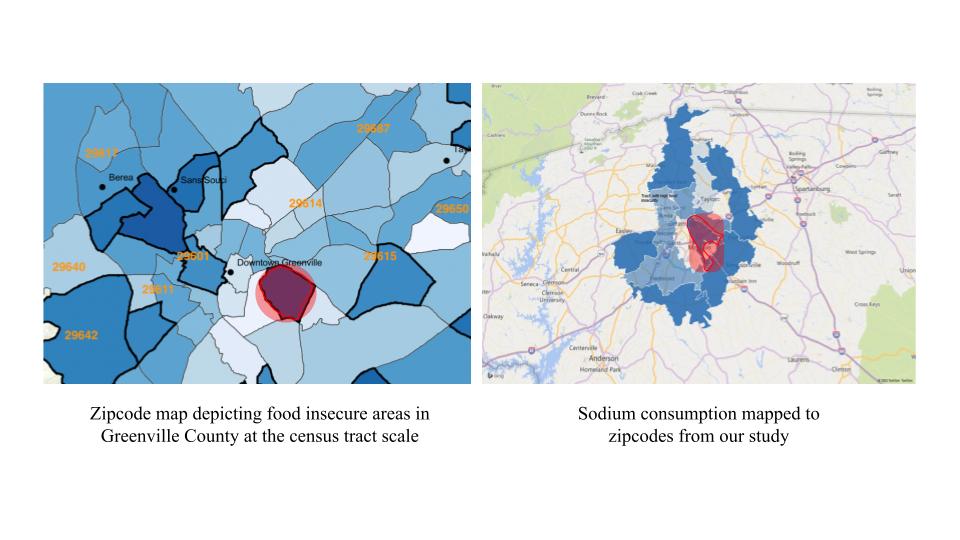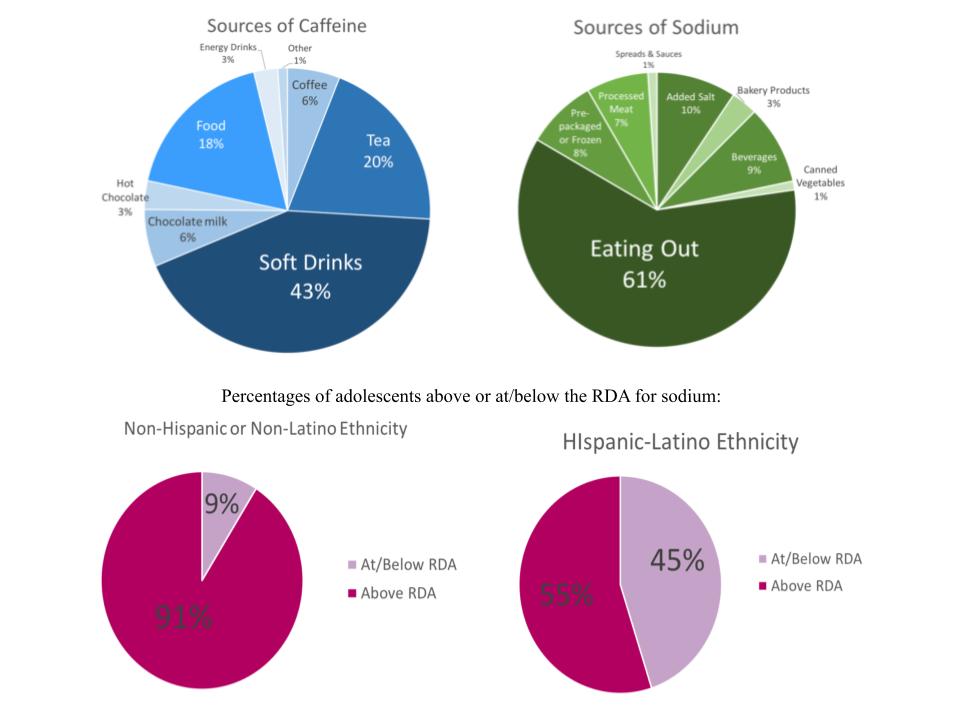Hypertension
Hypertension 1
9 - DECaffS Study: sodium and caffeine overconsumption in youth with obesity is influenced by ethnicity and residence in high food insecurity areas
Publication Number: 9.321

Mary C. Grant, B.A., MD-candidate (she/her/hers)
Medical Student
University of South Carolina School of Medicine Greenville
Greenville, South Carolina, United States- SG
Sudha Garimella, MD (she/her/hers)
Associate Professor
University of South Carolina School of Medicine Greenville
USC SOM Greenville
Greenville, South Carolina, United States
Presenting Author(s)
Co-Author(s)
Background:
Sodium and Caffeine consumption is rising in teenagers. Studies have shown increasing obesity and associated hypertension and diabetes in youth who live in food deserts. The influence of ethnicity on eating patterns is not well delineated in adolescents.
Objective: The Dietary Excess of Caffeine & Sodium (DECaffS) study analyzed the relationship between dietary overconsumption, ethnicity and geographical residence in teenagers. This is used to originate better strategies for blood pressure control at population level.
Design/Methods:
Cross-sectional analysis was performed on data from youth ages 12-18 Y as they presented for well checks at a large primary care center. Patients with diagnosed hypertension/special diets were excluded. Validated sodium and caffeine dietary recall questionnaires were administered. Descriptive analyses are reported as averages and simple percentages. Crude relationships between Blood Pressure (BP) parameters and other covariates were calculated using z test for 2 population proportions. Zip code analysis was done on Excel and heatmaps were generated for caffeine & sodium consumption based on zip code and compared with known data about food deserts in the area using healthy neighborhood environment data from Furman University (2022).
Results:
87 adolescents completed the questionnaires accurately. 23% had elevated BP. 69% were consuming >Recommended Dietary Allowance (RDA) for sodium and 27% were >RDA for Caffeine. 61% had Body Mass Index >85th%ile. Adolescents identifying as non- Hispanic ethnicity were 10.25 times more likely to report higher sodium intake and 1.5x more likely to report higher caffeine intake. Average sodium consumption was 3135 mg/day. Average caffeine consumption was 82 mg/day. Source of sodium is mostly from eating out. Common source of caffeine was soft drinks. High sodium and caffeine consumption was more common in youth with elevated BP. Sodium and caffeine overconsumption correlated to residence in food deserts.
Conclusion(s): Youth are consuming significantly higher amounts of caffeine and sodium. These foods are also calorie dense, causing obesity. Hypertension is likely to be mediated via obesity arising from overconsumption. While validated questionnaires exist to quantify consumption, we may be underestimating sodium consumption among teenagers consuming ethnic foods. More specific questionnaires need to be developed and validated for specific diets. Food insecurity contributes to higher consumption of caffeinated beverages and processed foods containing high sodium. Adolescents need education about healthy food choices in limited environments.

